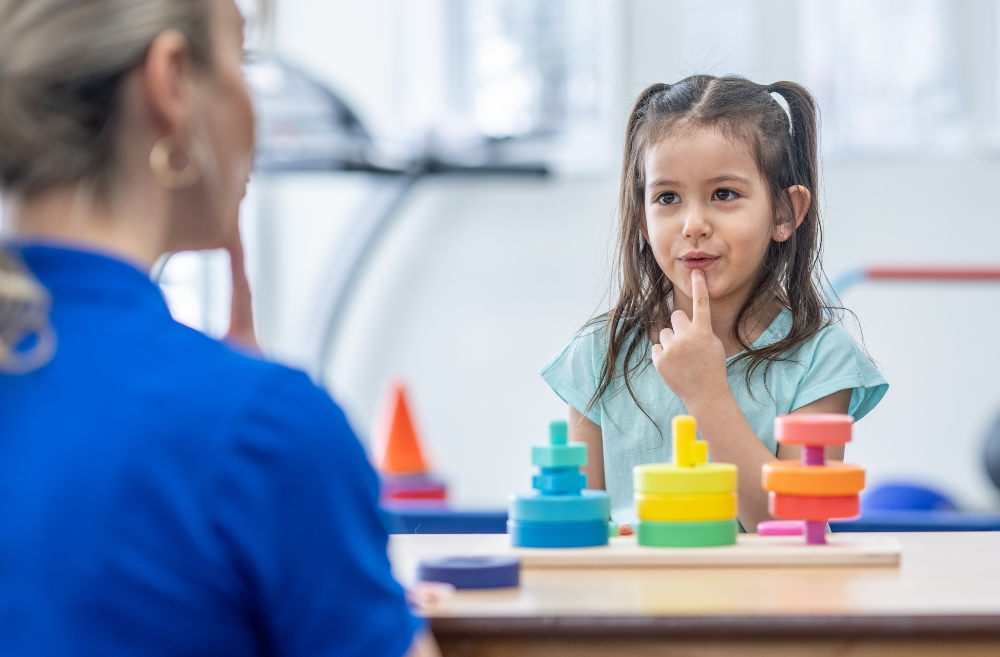By: Red Door Pediatric Therapy Staff
A lisp is a common speech disorder that affects the pronunciation of certain sounds. Children with a lisp may have difficulty producing the “s” and “z” sounds, as well as the “sh” and “ch” sounds. This can be frustrating for both the child and the parents, but it is important to remember that lisps are treatable with the help of a speech-language pathologist (SLP).
What is a lisp and what causes it?
A lisp is a speech disorder that affects the way a person pronounces certain sounds. There are two types of lisps: a frontal lisp and a lateral lisp. A frontal lisp occurs when the tongue protrudes between the teeth, while a lateral lisp occurs when the air flows over the sides of the tongue.
Lisps can be caused by a variety of factors, including anatomical differences in the mouth, developmental delays, or habits such as thumb-sucking. Some children may also develop a lisp as a result of a hearing impairment or a neurological disorder.
When should I be concerned about my child’s lisp?
It is common for young children to have difficulty pronouncing certain sounds as they are still developing their speech and language skills. In fact, lisps are most common in children between the ages of 2 and 6 years old. However, if your child’s lisp persists beyond the age of 6 or is causing difficulty with communication or social interactions, it is important to seek the advice of a speech-language pathologist.
What can I do if my child has a lisp?
If you are concerned about your child’s lisp, the first step is to schedule a consultation with a speech-language pathologist. An SLP will conduct a thorough evaluation of your child’s speech and language skills, including an assessment of their oral-motor abilities, sound production, and communication skills.
Depending on the severity and underlying cause, the SLP may recommend a variety of interventions, including speech therapy, exercises to improve oral-motor function, or referral to other specialists such as an orthodontist or an ear, nose, and throat doctor.
What does speech therapy for a lisp involve?
Speech therapy for a lisp will vary depending on the individual needs of your child. Some common interventions may include:
- Articulation therapy: This involves teaching your child how to produce the sounds correctly through a series of exercises and drills.
- Oral-motor therapy: This involves exercises to improve the strength and coordination of the muscles in the mouth and face.
- Speech-sound discrimination: This involves helping your child to identify and differentiate between the correct and incorrect production of sounds.
- Environmental modifications: This involves making changes to the environment to support your child’s communication skills, such as reducing background noise or providing visual cues.
In addition to therapy, there are also things you can do at home to support your child’s speech and language development. These may include:
- Providing opportunities for your child to practice their speech skills, such as through conversation or reading aloud.
- Encouraging your child to engage in activities that promote oral-motor development, such as blowing bubbles or playing with chewy toys.
- Using positive reinforcement to encourage your child’s progress and celebrate their successes.
In summary, a lisp is a common speech disorder that affects the pronunciation of certain sounds. While it can be frustrating for both the child and parents, it is important to remember that it is treatable with the help of a speech-language pathologist. If you are concerned about your child’s lisp, schedule a consultation with an SLP to discuss the best course of action for your child’s individual needs.

